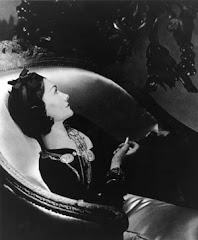
Lunching with Mary Greenwell yesterday I heard that there is no longer any reality in magazines. There are no photographs, apart from paparazzi ones, that are not airbrushed and photoshopped. No-one hasn't had botox, fillers, at the very least. This means that the (apparent) gap between what we look like and that the celebs look like gets wider every day. Born beautiful, they appear not to age.
Here's Lisa Armstrong in the Times yesterday talking about our lookist society:
One only has to see the Daily Mail's “Woman in parka shocker!” caption that accompanied a picture of Tessa Jowell on Monday to see how applying exacting sartorial standards across the board has become a habit. It's one thing to hold Madonna or Kate Moss up to scrutiny, or even to have fun with Carla Bruni, who is playing up to her new role sensationally - as befits a former supermodel. Inevitably, Sarah Brown got swept up in the forensic dissection of the French First Lady's outfits - and (hands up) The Times, along with other papers, ran unfavourable comments on the former's appearance. The entire female flank of the French Cabinet has recently had their wardrobes pored over as if they were auditioning to fill in for Cate Blanchett on the red carpet while she takes a spot of maternity leave.
In fairness, some of them looked as though they were auditioning. What's puzzling is the derisory tone of some of the commentary and the degree to which jibes about a woman's taste in footwear become a form of covert sniping about her character (the derision, by the way, doesn't generally come from fashion writers). Increasingly, looks are used to define women who never set out to compete by those rules.
“The fact that women are seemingly colluding doesn't make it harmless,” argues Sheila Jeffreys, the feminist author of Beauty And Misogyny: Harmful Cultural Practices in the West. “Sitting around bitching about how bad other women look won't ultimately make you feel better. Today's emphasis on looks - and the scorn heaped on anyone who doesn't conform - is incredibly unhealthy because it normalises painful and sometimes dangerous cosmetic procedures, promotes uncomfortable and immobilising clothes, fosters an epidemic of eating disorders and creates a tyranny of youth, under which no one is allowed to age.
“The principles of beauty have always been part of the mating ritual, but they're now routinely practised in the workplace. We're seeing that, even in politics, women are required to look a certain way: high heels, tighter-fitting clothes, lipstick. It's a free world, but in reality there's very little choice involved. There's virtually no challenge to the wall of thin, youthful images. The definition of what's attractive is becoming narrower.”
And while Western women are under pressure to show more and more of their bodies, Muslim women are increasingly veiling themselves. “It's a different manifestation of the same condition. I don't see either as empowering,” says Jeffreys.
Therein lies what seems to be the mother of paradoxes. More than 30 years after bra-burning and lipstick-abstaining, most Western women earn their own money, many work in worlds previously closed to them and a few occupy the top slots. Male babies outnumber females by 104 to 100 - so in theory women have never been more powerful. So why perpetuate, and even inflate, criteria that seem more relevant to women living in a harem?
